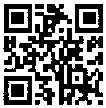Over June and July I have participated in the IIEEC-Oxford University Press Teacher Training Certificate Program in Tokyo run by Ritsuko Nakata. For each workshop attended their is an additional task of writing a report. Even though I am not intending to apply for the certificates, as I have no plans of attending all 6 workshops, I thought I would give them a go anyway. Any feedback or comments are very welcome.
Here is the first instalment of the workshop reports: Know Yourself, Know Your Students presented by Miki Sakai.
Here is the first instalment of the workshop reports: Know Yourself, Know Your Students presented by Miki Sakai.
The focal point of
this workshop was the “Multiple Intelligences” (also referred to as MIs, which
is something I learnt about whilst completing my TEFL course), understanding
the details of the different intelligences and how to apply them effectively within
the classroom when teaching young learners. Everybody is said to possess each
and every type of the 8 intelligences, albeit in different proportions.
Unfortunately, especially in my case, just possessing these MIs does not
necessarily make you intelligent. However by understanding the 8 intelligences,
we are able to identify our students’ skillset to create appropriate lesson
plans that coincide with their learning strengths by catering to their
strongest intelligences. For example, a person who possesses strong “Math
Logic” (or “Number and Reasoning Smart”) will be better suited to activities
involving counting or logical thought, whereas someone who is
“Bodily-Kinesthetic” (or “Body Smart”) is more geared towards activities which comprise
of gestures and bodily movement. By combining as many of the intelligences as
possible during our lessons, we are able to improve our students’ aptitudes for
learning English.
It is interesting to
note that each of the intelligences can be trained or developed, much like any
other skill, meaning we can turn any weakness into strength. Or at the very
least develop it to a point where it is no longer considered to be a weakness.
The MIs also interact with each other, often in complex ways; they are not so
black and white. Students may be
accomplished in many of the intelligences and may respond better to tasks that
integrate various skillsets rather than focusing on them individually. People
can be intelligent in many different ways and we can come to realize this fact
through the MIs.
Even before attending
this workshop I have always made a point of having variety in my classroom by
trying new fun and invigorating activities as often as possible. Sure it’s
great to have a little structure and routine as well, but as we all know young
learners can be quick to lose interest in repetitive activities, which can lead
to a dull and mundane classroom environment. Having attended the workshop, I
now understand the importance of respecting my students’ proficiency in the
different intelligences, not just the intelligences I am most comfortable and
familiar with, in order to incorporate activities that focus on my students’ capabilities
as well as providing flexible lesson plans that utilizes the MIs that the
students are most skilled with whilst also developing their weaker
intelligences.
Now comes the
important part, applying what I have learnt from the workshop into my
classroom. From previous experiences I have found that a majority of students
tend to be visual learners, meaning that many of my classes include activities
that revolve around the “Spatial” intelligence. I like to use props and items
of realia as visual aids where possible in place of flashcards and promote
associating gestures with words or phrases, even if some may not seem all that
conventional. Students respond much better when presented with a visual
stimulus when introducing new vocabulary, whilst the gestures can serve as
prompts for when the students are unable to recall a word or phrase. I have
also found that at times students are able to remember the gesture associated
with the word instead of the word itself, although this doesn’t mean they have
learnt and memorized the words completely I still view this as progress
nonetheless.
Songs and chats are
also a fantastic way of involving many of the MIs at once, it also gets the
students motivated and energised whilst allowing them to express themselves
with their bodies. There are such a multitude of songs to choose from it’s
sometimes hard to decide what to use! I tend to go with songs that allow the
students to express their individual creativity while interacting
interpersonally with their peers. One of my favourite songs to perform is “5
little monkeys” from Knock Knock English. It combines the “Verbal Linguistic”,
“Math Logic”, “Bodily-Kinesthetic”,
“Musical”, “Interpersonal” and (to a lesser extent) “Naturalist” intelligences
in just 1 activity. There is even a video version available on the “Super
Simple Songs” YouTube channel that would then additionally include the
“Spatial” intelligence. This song also gives me the opportunity to work on my
monkey impression, which always gets a great reaction from my students. Some of
my students probably think it’s TOO realistic.
All in all I found
this workshop constructive and beneficial towards my personal development as an
English teacher, especially for young learners. As well as learning about the MIs
in more detail than I had previously, the workshop gave me the opportunity to
be exposed to new ideas and teaching techniques which I will be adding to my
ever growing repertoire.


No comments:
Post a Comment
By all means leave your comments - please do not be offensive, abusive, or rude. We ask you to sign your comment as well, please.